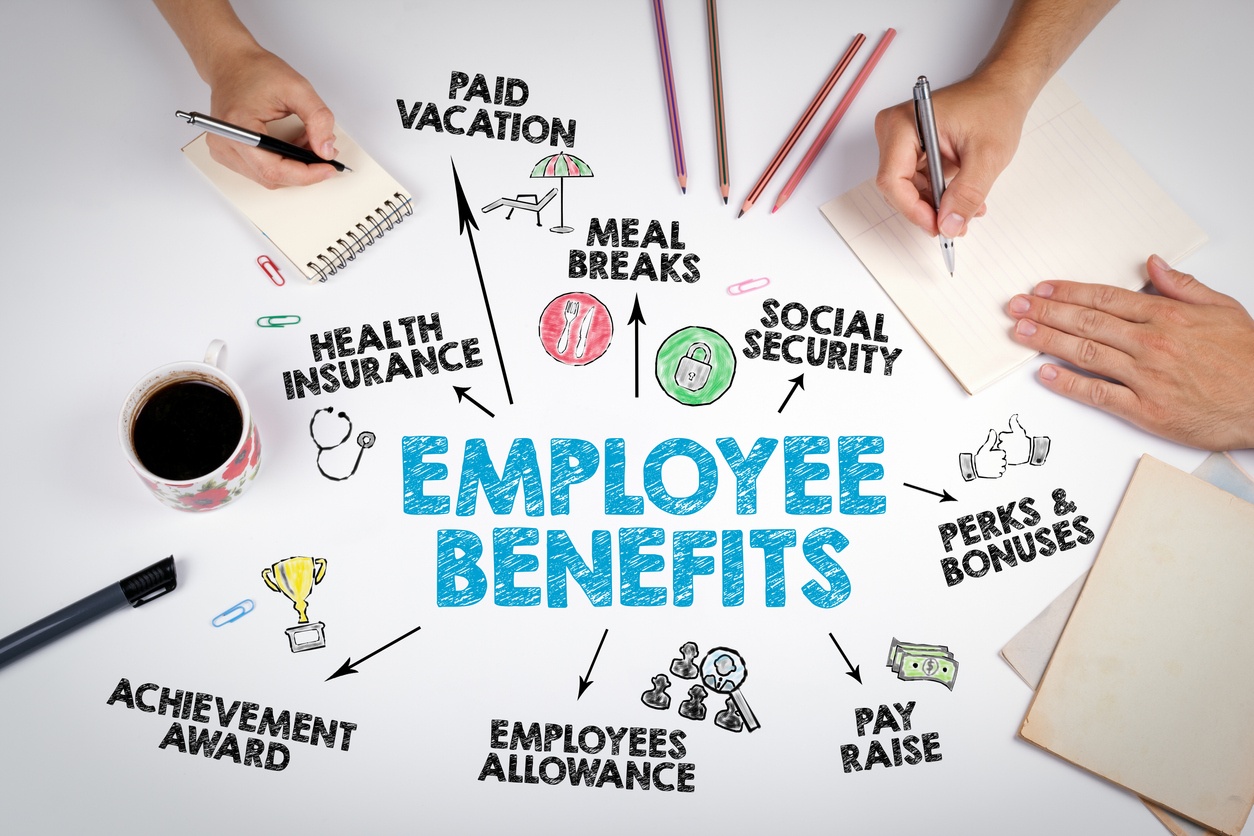What Are the Four Key Types of Employee Benefits?

Employee benefits are essential for your business, as they help in recruiting skilled individuals and retaining highly-performing employees. However, how do you know which types of employee benefits are the selling points of your business?
You can provide comprehensive healthcare benefits to your employees. Draft a benefits package that is the right combination of health, life, retirement, and disability insurance.
Also, give your employees the option to pay through the salary deduction for voluntary benefits. Either way, you should understand the different key types of employee benefits.
Each key type has subcategories that include insurance policies.
Health Benefits
Health benefits are further categorized into two: insurance and non-insurance related. When you say insurance-related, independent insurance providers offer these plans in the marketplace.
Examples of non-insurance-related health benefits are flexible spending account, health savings account, and health reimbursement account.
Medical Insurance
You can cover a portion of the premium. This insurance covers hospitalization and doctor visits. Surgeries and prescriptions are also included.
Dental Insurance
Some medical insurances separate dental coverage while others lump it. Often, diagnostics, prevention, cleaning, annual checkups are some coverages you can expect from this insurance.
Vision Insurance
Good eyesight is important in the workplace. Thus, include this benefit to ensure your employees can continue their routine exams, change prescription glasses and get medical assistance with other eye-related diseases.
Cancer Insurance
Cancer is one of the leading causes of death, not just in the US but also worldwide. With this fact, you can include cancer insurance in your health benefits. This policy is supplemental and triggers only when your employee has a cancer diagnosis.
Critical Illness Insurance
Aside from cancer, a critical illness could be a risk for your employees. Most often, critical illness separates the coverage for cancer. So, it’s best to check the extent of coverage to ensure your employees are fully insured.
Flexible Spending Account (FSA)
Sometimes, insurance isn’t enough to cover out-of-pocket costs, or the policy doesn’t cover the cause of illness. With FSA, you can ensure your employees will always have an emergency fund to use when needed. This is tax-free, by the way.
Health Savings Account (HSA)
The requirement for HSA is a high deductible health plan. Only qualified medical expenses are eligible for payment in case employees need to use this account.
Health Reimbursement Account (HRA)
This account entitles your employee to receive tax-free reimbursement for qualified medical expenses. The amount is fixed and could be rolled over if there’s an unused portion. You fund this every year, and this is your asset, not the employees.
Life Plans
Life insurance is one of the most common Santa Fe Employee Benefits. Some policies have accidental death and dismemberment benefits aside from the standard coverage. When your insured employee suffers dismemberment due to an injury or accident, this could cover medical expenses and allowances.
Often, these coverages overlap with disability insurance. However, they don’t replace one another. Dismemberment is different from disability as far as insurance is concerned.
Disability and Accident Insurance
Accidents could happen anytime. Help your employees manage out-of-pocket costs brought by accidents. Often, this insurance covers disability. Sometimes, you can get a separate policy.
Disability insurance pays your employee a portion of their salary for several months. This insurance can either be short-term or long-term.
Short-term disability insurance coverage lasts up to 1 year, depending on the provider. The long-term version may last up to the duration of the disability. If the disability continues, the benefit will last for a specific number of years or until retirement.
Still, the benefit and duration of coverage are stated on the policy statement. Another important matter is the definition of disability. Insurance providers define it differently, so make sure to read and understand the fine print.
Retirement Plans
The 401(k) is the most common retirement plan and is tax-free. Your employee can contribute to this plan through salary deduction. As a business owner, you can match the contribution your employees make to their retirement plans.
The limit every year is $19,500 for the mandatory contribution. If your employees want to make voluntary deposits after-tax contributions, they can do so, but only up to $58,000 or 100% of their salary, whichever is lower.
This retirement plan is withdrawal anytime, but the withdrawal is subject to tax, except during the COVID pandemic.
Final Words
Employee benefits are undoubtedly an important part of your business. These could increase expenses to some extent, but the advantages outweigh the costs.
Besides, most types of employee benefits are voluntary, so you aren’t shelling out money, except for 401(k). All you’re doing is pay the premium in advance, but deduct the amount to your employee’s compensation to help them out.
About Daniels Insurance, Inc.
At Daniels Insurance, Inc., we have a unique understanding of the risks that businesses like yours face on a regular basis. With the backing of our comprehensive coverages and our dedication to customer service and quick claims resolution, your business will be fully protected. For more information, contact us today at (855) 565-7616.
